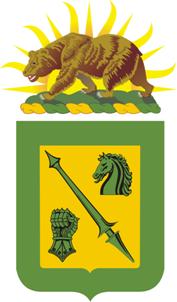Related Research Articles

The 199th Infantry Brigade (Light) is a unit of the United States Army which served in the Army Reserve from 1921 to 1940, in the active army from 1966 to 1970, briefly in 1991–1992 at Fort Lewis, and from 2007 as an active army training formation at Fort Benning.

The 194th Armored Brigade is a separate brigade of the US Army. All armor, cavalry, and armor and cavalry mechanic soldiers, and Marines in equivalent specialties, are trained by the 194th under the armor component of the Maneuver Center of Excellence at Fort Benning, Georgia, where the 194th has been garrisoned since 2012.

The 205th Infantry Brigade, was first formed as part of the United States Army Reserve's 103rd Division. It was active from 1921 to 1942 and then from 1963 through 1994, and then reformed in 2006.

The 165th Infantry Brigade is a brigade of the United States Army. It no longer serves a combat role, and instead is a training unit of the United States Army.

The 171st Infantry Brigade was an infantry brigade of the United States Army based at Fort Jackson, South Carolina. With a long history of serving, the brigade saw action during both World War I and World War II before it was inactivated in 1946. During the Cold War the brigade was once again activated for a period of ten years until again inactivated in 1972. In 2007 the brigade was reactivated as a training support unit and inactivated on 10 June 2016.

The 107th Cavalry Regiment, Ohio Army National Guard, is a parent regiment under the U.S. Army Regimental System, with headquarters at Hamilton, Ohio. It currently consists of the 2nd Squadron, 107th Cavalry Regiment, part of the 37th Infantry Brigade Combat Team (BUCKEYE), Ohio National Guard located throughout southwest Ohio.
The 308th Armored Cavalry Regiment was a Minnesota-based reconnaissance unit of the United States Army Organized Reserve Corps, which briefly existed after World War II. Its 1st Battalion traced its heritage back to a World War II Tank destroyer battalion.
The 304th Armored Cavalry Regiment was a Massachusetts-based reconnaissance unit of the United States Army Organized Reserve Corps, which briefly existed after World War II. It was constituted in 1948 and partially organized from existing units before being inactivated in 1950 and disbanded in 1952.

The 303rd Armored Cavalry Regiment was a New York-based reconnaissance unit of the United States Army Organized Reserve Corps that briefly existed after World War II.
The 302nd Armored Cavalry Regiment was a New York-based reconnaissance unit of the United States Army Organized Reserve Corps, which briefly existed after World War II. Constituted in 1948, it was partially organized later that year and inactivated in 1950.
The 300th Armored Cavalry Regiment was a Texas-based reconnaissance unit of the United States Army Organized Reserve Corps, which briefly existed after World War II. It was constituted in 1948 and partially organized from existing units before being inactivated in 1950 and disbanded in 1952.
The 309th Armored Cavalry Regiment was a Michigan-based reconnaissance unit of the United States Army Organized Reserve Corps, which briefly existed after World War II.
The 311th Armored Cavalry Regiment was a Texas and Louisiana-based reconnaissance unit of the United States Army Organized Reserve Corps, which briefly existed after World War II. It was constituted in 1948, partially organized from existing units later that year, and inactivated in 1950.
The 314th Armored Cavalry Regiment was a Tennessee-based reconnaissance unit of the United States Army Organized Reserve Corps, which briefly existed after World War II. It was constituted in 1948, partially organized from existing units in 1949, and inactivated in 1950.
The 317th Armored Cavalry Regiment was an Illinois-based reconnaissance unit of the United States Army Organized Reserve Corps, which briefly existed after World War II. It was constituted in 1948, partially organized from existing units, and inactivated in 1950.
The 320th Armored Cavalry Regiment was an Ohio-based reconnaissance unit of the United States Army Organized Reserve Corps, which briefly existed after World War II. It was constituted in 1948, partially organized from existing units in 1949, and inactivated in 1950.
The 748th Cavalry Regiment was a United States Army cavalry regiment, represented in the Georgia Army National Guard by 1st Squadron, 748th Cavalry, headquartered at Griffin, Georgia, part of the 48th Armored Division. It was broken up in 1968 when the division was inactivated.

The 111th Armored Cavalry Regiment was a light armored cavalry regiment that was part of the California Army National Guard, briefly active during the early years of the Cold War.
References
Citations
- ↑ Sawicki 1985, p. 360.
- 1 2 3 Sawicki 1985, pp. 360–361.
- ↑ Clay 2010, p. 339.
- ↑ Yeide, Harry. "Cavalry Histories" . Retrieved 22 July 2017.
Bibliography
- Clay, Steven E. (2010). US Army Order of Battle 1919–1941 (PDF). Vol. 1: The Arms: Major Commands and Infantry Organizations. Fort Leavenworth, Kansas: Combat Studies Institute Press. ISBN 9780984190140.
- Sawicki, James A. (1985). Cavalry regiments of the US Army. Dumfries, Virginia: Wyvern Publications. ISBN 9780960240463.